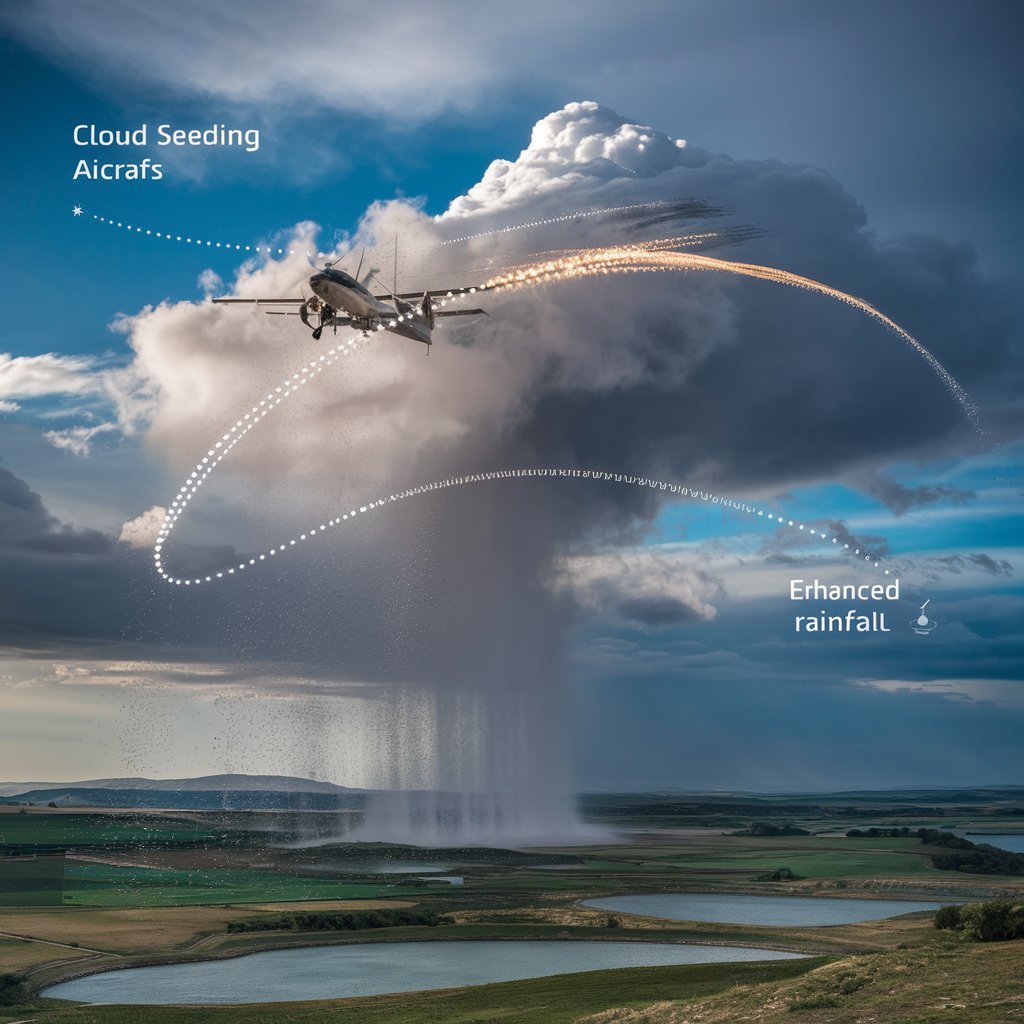Introduction:
Imagine being able to control when and where it rains. This is the ambitious goal behind cloud seeding, a technology that aims to enhance precipitation. Cloud seeding, often referred to as artificial rain, has the potential to address water scarcity and improve agricultural yields. This blog delves into the science, methods, applications, and implications of cloud seeding.
What is Cloud Seeding (or Artificial Rain)?
Cloud seeding is a weather modification technique that involves adding substances to clouds to encourage precipitation. The concept dates back to the 1940s when scientists first discovered that certain chemicals could induce rainfall. The primary goal of cloud seeding is to enhance natural precipitation processes, thereby increasing the amount of rainfall in a targeted area.
How Does Cloud Seeding Work?
The process of cloud seeding relies on the introduction of substances like silver iodide, potassium iodide, or sodium chloride into clouds. These substances serve as cloud condensation nuclei (CCN), around which water vapor can condense to form water droplets. When enough droplets coalesce, they become heavy enough to fall as precipitation. Cloud seeding can be done using aircraft that disperse the chemicals into the clouds or ground-based generators that release the substances into the atmosphere.
Cloud Seeding Methods
There are three primary methods of cloud seeding:
-
Aerial Seeding: Aircraft equipped with flares or dispersal devices release seeding agents directly into the clouds. This method is effective for reaching high-altitude clouds and covering large areas.
-
Ground-Based Seeding: Ground-based generators burn seeding agents, which are then carried by updrafts into the clouds. This method is cost-effective and suitable for specific local areas.
-
Hybrid Methods: Combining both aerial and ground-based techniques to optimize the seeding process and maximize precipitation outcomes.
Where is Cloud Seeding Used?
Cloud seeding is employed in various regions worldwide to address water shortages, support agriculture, and manage weather conditions. Countries like the United States, China, India, and the United Arab Emirates have implemented cloud seeding programs. Applications include:
-
Agriculture: Enhancing rainfall to support crop growth and improve yields.
-
Water Management: Increasing reservoir levels and replenishing groundwater supplies.
-
Weather Modification: Reducing the impact of droughts and managing snowfall for winter sports and hydropower generation.
Is Artificial Rain Harmful?
The environmental and health impacts of cloud seeding are subjects of ongoing research and debate. Some concerns include:
However, regulatory measures and safety protocols are in place to minimize these risks, and ongoing research aims to address these concerns.
Current Research and Innovations
Recent advancements in cloud seeding technology and research efforts are focusing on:
-
Improved Seeding Agents: Developing safer and more effective substances for cloud seeding.
-
Predictive Modeling: Using advanced weather forecasting and modeling techniques to optimize seeding operations.
-
Quantifying Effectiveness: Conducting rigorous studies to measure the impact of cloud seeding on precipitation levels and patterns.
Challenges and Limitations
Despite its potential benefits, cloud seeding faces several challenges:
-
Variable Success Rates: The effectiveness of cloud seeding can vary depending on weather conditions and geographical factors.
-
Public Perception: Addressing public concerns and misconceptions about the safety and ethics of cloud seeding.
-
Regulatory Framework: Establishing clear guidelines and regulations for implementing cloud seeding programs globally.
Conclusion: Cloud seeding represents a promising technology for addressing water scarcity and supporting agricultural productivity. By understanding the science and methods behind artificial rain, we can appreciate its potential benefits and acknowledge the importance of addressing its environmental and ethical implications. As technology advances, cloud seeding could play a vital role in sustainable water management and weather modification, offering a glimpse into a future where humans have greater control over one of nature's most precious resources.



